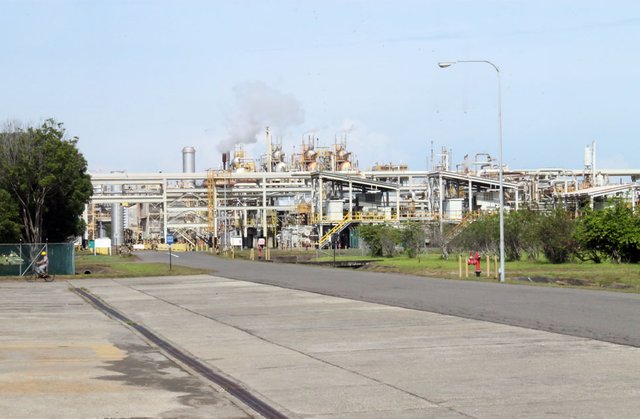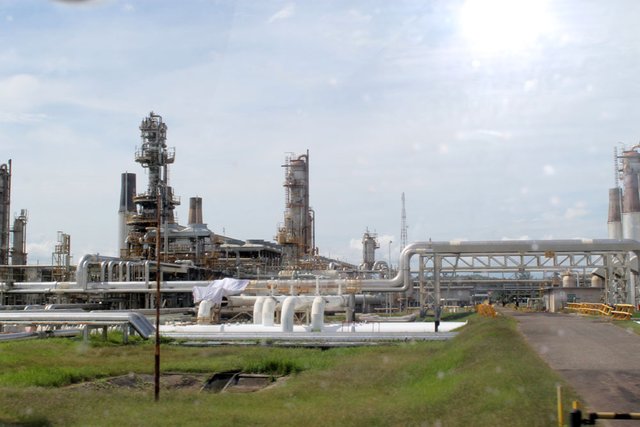The Weakness of the Arun Lhokseumawe Special Economic Zone |

Kilang LNG PT Arun, kini PT Perta Arun Gas.
SEVEN years after it was inaugurated by President Joko Widodo on December 14, 2018, the crescent moon has not yet been seen in the Arun Lhokseumawe Special Economic Zone or KEK. Year after year has passed, the Lhokseumawe KEK is still languishing. The roaring economic engine has not been heard, let alone absorbing tens of thousands of workers even though a budget of IDR 5.3 trillion has been disbursed.
When compared to KEKs in other regions in Indonesia that continue to progress, the Arun Lhokseumawe KEK looks sad. Compare it, for example, with the nearest KEK in Sei Mangkei in Simalungun, North Sumatra. The Sei Mangkei KEK has absorbed 4,279 workers outside of construction. By 2031, the Sei Mangkei KEK is targeted to absorb 83,304 workers.
So far, the Sei Mangkei KEK and other KEKs look more progressive compared to the Arun Lhokseumawe KEK. When compared to the Mandalika Special Economic Zone in Lombok, the Lhokseumawe Special Economic Zone feels further behind, like a racer who is several laps behind during a MotoGP race at the Mandalika Circuit.
Indeed, there are several differences in funding schemes between several Special Economic Zones. Special Economic Zones outside Lhokseumawe are funded by the State Budget, while the Arun Lhokseumawe Special Economic Zone is funded by a consortium. Government intervention is still needed.
An official at a consortium company in Lhokseumawe said that there are conditions where companies cannot invest in the Arun Lhokseumawe Special Economic Zone if the finances are still audited red. Investments must have green status. For this reason, a legal umbrella is needed so that state-owned companies can invest even though the Special Economic Zone has not yet made a profit.
The Arun Lhokseumawe Special Economic Zone, which has an area of 2,600 hectares, should have a strategic location because it is located on the Malacca Strait and has adequate transportation and other supporting infrastructure.
The Arun Lhokseumawe Special Economic Zone is designed to develop the energy, petrochemical, agro-industry, logistics, and natural resource-based industries such as palm oil and wood. Raw materials are available in the buffer zone and the surrounding infrastructure is very supportive.
Several strategic steps need to be taken to advance the Arun Lhokseumawe Special Economic Zone, such as strengthening infrastructure and connectivity with the Trans-Sumatra toll road. This condition will increase the mobility of goods and people and attract more investors.
The Arun Lhokseumawe area can also synergize with Perta Arun Gas, PT Pupuk Iskandar Muda, and Pelindo to make the Special Economic Zone a green industrial area. This area can focus more on new and renewable energy through the development of biomethane, green hydrogen, and blue ammonia.
In addition to infrastructure, local human resources and the community are also very supportive of actively participating in the economic development of the region.
There are several Special Economic Zones in Indonesia that are stagnant and therefore threatened to be revoked by the government. They are the Palu Special Economic Zone (Southeast Sulawesi), Bitung Special Economic Zone and Likupang Special Economic Zone (North Sulawesi), Morotai Special Economic Zone (North Maluku), Sorong Special Economic Zone (West Papua), and Maloy Batita Trans-Kalimantan Special Economic Zone.
The six Special Economic Zones are being evaluated and given the opportunity to improve the special economic zones. Don't let the Arun Lhokseumawe Special Economic Zone be included in the next list.[]

Thank you very much @miftahulrizky.